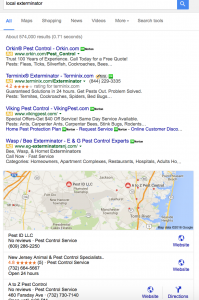
Amazon’s Market Share: Why Brand Marketing Still Matters to Retailers
To a small retailer, Amazon can be both a friend and a foe. Building a brand is one of the best strategies for concurrently competing with Amazon as a retailer and partnering with Amazon as a seller. A brand name separates a product from the pack and helps a product get found. According to a Forrester Research study, about one third of all online product searches in the U.S. start at Amazon. Brand names have the distinct advantage of showing up in search results, based on the search terms shoppers use.
What Does Brand Mean?
Brand is not just a catchy name or cool logo; it’s the association of good feelings with the name that makes shoppers choose a particular product or service. A common marketing adage is shoppers buy on emotion and justify a purchase with logic. We choose one brand over another because the product looks better, feels better, smells better, tastes better or promises to make us better. We choose a brand because of this personal connection formed by our own senses, a feeling of “it’s right for me.”
Brand is just as important for the shoppers who are less swayed by emotion and more influenced by price. To many shoppers, the Amazon brand is associated with reliable service, value and selection. Value-seeking shoppers don’t always buy the cheapest offerings on Amazon. Instead, they use emotions to sort through the products, looking at reseller ratings, brands they trust and product reviews at a site where they feel they belong. The feeling of brand as a shared community is especially true for the millions of Amazon Prime members who subscribe to brand loyalty with an annual fee.
How Do You Get People to Pay More For a Name?
As a marketing professional, I know brand building strategies. As a shopper, I fall for them every time. Recently, I stood in the grocery store condiments aisle, weighing the pros and cons of which bottle of Worcestershire sauce to buy. The Lea & Perrins® bottle caught my eye, as its iconic paper wrap reminded me of my mom. It’s the brand my mother always bought to make her delicious grilled hamburgers. This bottle costs 50% more than the other Worcestershire sauce brands, but emotion and brand beat budget.
Lea & Perrins sets a great example of effective brand building.
Perceived Value
The Lea & Perrins unique packaging adds perceived value and sends the right message of quality: this brand has put a lot of thought and care into their product. Plus, the product looks better than the other brands on the grocery store shelf (or Amazon search results), so it’s easy to assume it will taste better too.
Unique Story
“The Famous Paper Wrap” story is printed on the Lea & Perrins packaging, inviting the consumer to be part of the rich heritage of this brand, which dates back to 1837. This feeling of shared history strengthens brand loyalty. Not only is this the brand my mother used, but it’s also the brand my grandmother and generations before her used. I must continue the tradition.
Consistent Messaging
Lea & Perrins conveys the premium packaging = quality message on all their marketing channels, making good use of the clever tag line “Unwrap the Flavor.” The same messages of quality and tradition (plus the same recipe my mother used) are easy to find on the official Lea & Perrins website – as well as their brand page at Amazon.
Make a Name For Yourself
For a new business that hasn’t been around since 1837, the same principles apply:
- Make your name synonymous with the value your products offer.
- Tell a unique story to differentiate your product from the others.
- Consistently reflect these values and narrative in every detail of your business – your customer service team, your packaging, your emails, your website and your social media channels.
Building a Brand on Amazon
It may seem counterintuitive for new or smaller businesses to gain brand awareness in Amazon’s massive marketplace, but with the right product ads, product listings and messaging, it can be a very lucrative way to grow a business.
With over 24 years of experience, Cajam Marketing can help you develop and nurture your brand. Our online marketplace specialists can guide you through selling and advertising on Amazon, Houzz, Jet and other digital marketplaces. Learn more.



